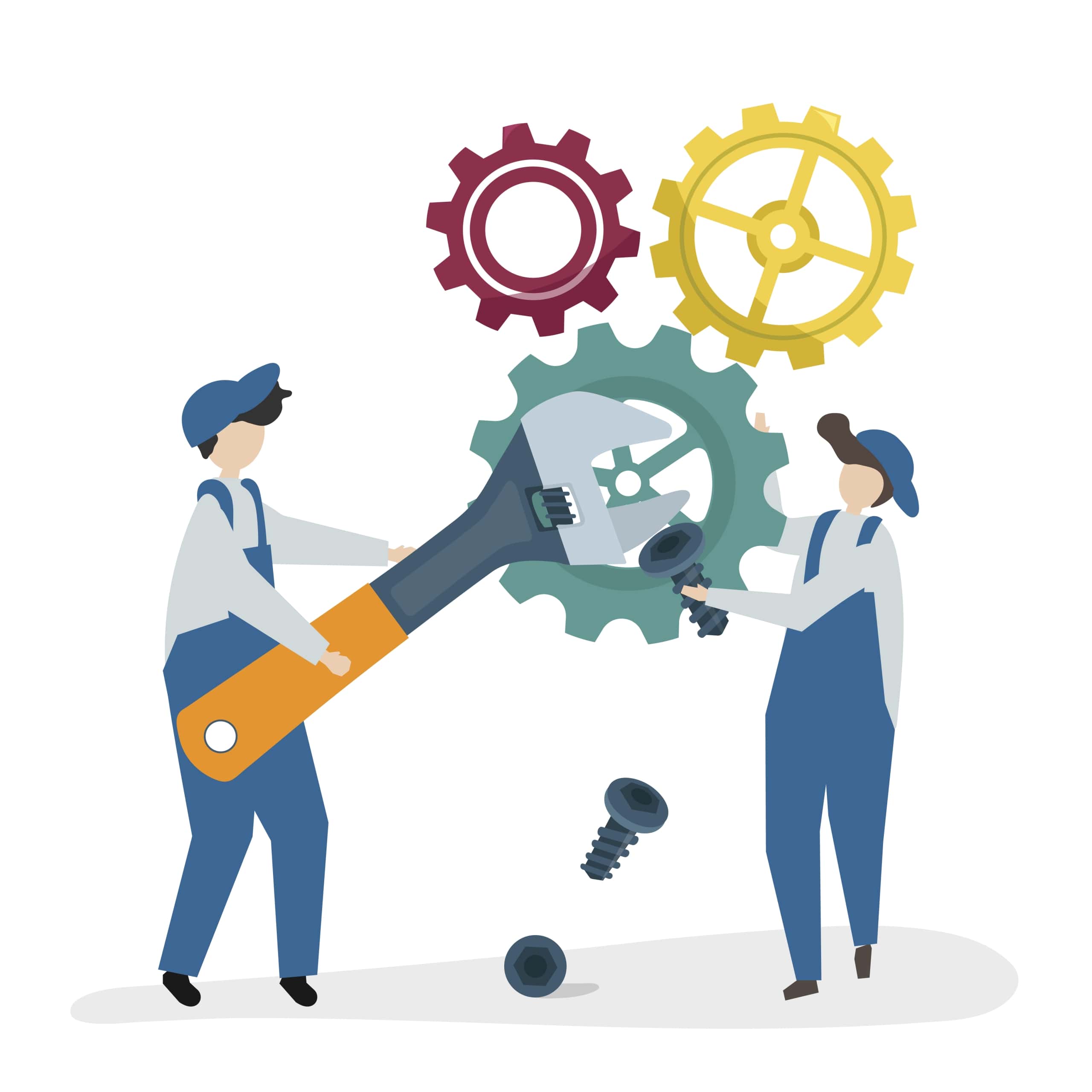What Is Predictive Maintenance in Wet Wipes Machines?
By using data and technology to monitor machine health in real time, predictive maintenance is a cutting-edge technique that enables wet wipes manufacturers to foresee problems and take action before they result in expensive breakdowns or failures. Predictive maintenance in the context of producing wet wipes refers to adding sensors to equipment that monitors several variables such as temperature, vibration, pressure, and operating speed. These sensors collect data from the equipment on a continual basis, which is subsequently processed by sophisticated algorithms. The objective is to identify any failures or early indicators of wear and tear far in advance of any effects on the manufacturing line.
Wet wipes manufacturers often depend on reactive maintenance, which fixes machinery when they break down, or preventative maintenance, which services components in accordance with a set timetable. Both approaches have the potential to be ineffective, either by requiring needless component replacements or unplanned downtime. But predictive maintenance makes this process more efficient by predicting when and where problems can arise, guaranteeing that maintenance is performed exactly when it’s required. This focused strategy may minimize maintenance costs, increase equipment longevity, and drastically decrease unscheduled downtime.
For wet wipes manufacturers , this innovation is revolutionary. Production lines seldom have time for delays as they are often running at maximum capacity. The whole supply chain may be affected by an unexpected malfunction, which might result in missed deadlines, squandered commodities, and higher labor expenses. By offering useful data that manufacturers might use to schedule repairs during off-peak hours or put remedial measures in place before an issue worsens, predictive maintenance reduces these risks. Predictive maintenance eventually boosts productivity and profitability in the wet wipes manufacturing process by improving machine reliability and operational efficiency.
How Predictive Maintenance Translates Into Cost Savings
In the wet wipes industry, predictive maintenance has many economical advantages. It does this mainly by minimizing unplanned repairs and maximizing equipment maintenance. Conventional reactive maintenance often leads to unscheduled downtimes, in which equipment breaks down without warning, stopping output and costing large sums of money. This is resolved by predictive maintenance, which keeps an eye on the health of the equipment and foresees any problems before they arise. By taking a proactive stance, firms may minimize the expensive interruptions of production downtime by addressing small issues before they become severe ones.
Optimizing the timing of repairs and replacements is a major way predictive maintenance reduces costs. Wet wipes manufacturers may now execute maintenance just when it’s required by using predictive systems, as opposed to rigid maintenance plans that don’t take into consideration the real state of the equipment. In order to maximize resource efficiency, machines are only maintained when certain components begin to indicate wear. Labor expenses and the cost of maintaining large stocks of spare parts may be decreased for businesses by avoiding premature component replacements or needless repairs.
The extended lifetime of equipment is another cost-saving advantage. Early issue detection reduces the likelihood of catastrophic failures in machines and components. By addressing these problems gradually, wet wipes manufacturers can lessen the pressure on their equipment and prolong the time that it performs at its best thanks to predictive maintenance. Because there is less need for costly equipment repairs due to wear and tear, money may be saved for expansion plans or other investments.
Reduction in energy expenses is another benefit of predictive maintenance. Energy consumption is often lower in well-maintained and running machinery since they don’t have to work as hard to overcome inherent inefficiencies. Predictive maintenance assists firms in reducing their total energy usage, which lowers utility costs by maintaining machinery in optimum condition. As time goes on, this energy efficiency also helps to create a more sustainable production process, which is consistent with the growing industry emphasis on environmentally friendly manufacturing techniques.
Lastly, predictive maintenance improves operational effectiveness and productivity. Wet wipes manufacturers may arrange maintenance for scheduled downtimes or off-peak hours, which enables continuous production during crucial periods. By preventing unplanned stoppage, this guarantees that manufacturing lines are operating at maximum capacity, increasing output and optimizing resource allocation. Predictive maintenance is an essential instrument for cost control and profit maximization since it ultimately results in lower downtime, lower maintenance costs, longer machine lifespans, and optimal energy consumption.
How Predictive Maintenance Boosts Profit Margins
Not only can predictive maintenance technology assist wet wipes manufacturers in decreasing expenses, but it also actively increases profit margins via increased productivity, better machine performance, and less waste. Reducing unexpected downtime, which is one of the main causes of industrial revenue loss, is one of the main ways it does this. Unexpected machine failures cause production to stop, which may lead to missed deadlines, wasted production time, and even fines from customers. By keeping an eye on machine health in real-time and providing early indications of any problems, predictive maintenance helps wet wipes manufacturers fix them before they interfere with business operations. Profit margins increase as a result of constant, continuous manufacturing and optimal output.
The capacity of predictive maintenance to improve resource allocation is another important advantage. Conventional maintenance techniques include manufacturers replacing components according to predetermined timetables, perhaps resulting in over- or unneeded service of equipment. By determining precisely when components need to be maintained or replaced based on their actual condition rather than a set schedule, predictive maintenance removes this inefficiency. By using a focused strategy, labor expenses are decreased, spare parts are used less often, and maintenance teams are free to concentrate on more important responsibilities. Wet wipes manufacturers may increase profitability by reducing operational expenditures via more efficient resource use.
Predictive maintenance also has the potential to greatly improve product quality, which is another important aspect of increasing profit margins. Variations in product quality may result in wasted resources, expensive rework, or even reputational harm to a company if faulty goods are released into the market. Predictive maintenance keeps equipment in top operating condition so that it can continuously manufacture high-quality wet wipes that satisfy customers’ requirements. Wet wipes manufacturers may simultaneously preserve strong customer connections and loyalty while avoiding the financial losses linked to waste and rework by lowering the number of faulty units and increasing overall product dependability.
Long-term financial benefits result from equipment lifetime extensions, which are mostly dependent on predictive maintenance. Early wear and tear detection allows wet wipes manufacturers to replace or repair small parts before they become bigger, more costly problems. This prolongs the life of equipment and reduces the need for significant overhauls or whole machine replacements. Companies may avoid the large capital costs associated with purchasing new gear by extending the life of their equipment, freeing up funds that can be used for expansion, innovation, or other profit-generating initiatives.
Finally, overall equipment effectiveness (OEE), a crucial industrial statistic that assesses machine performance, availability, and quality, is improved by predictive maintenance. Predictive maintenance keeps machines in optimal operating condition, which increases overall equipment effectiveness (OEE) and allows for greater production capacity. Wet wipes manufacturers may boost productivity without raising operating expenses when machinery operates more reliably and smoothly, which boosts revenue and improves profit margins.
In conclusion, by decreasing downtime, maximizing resource utilization, boosting production efficiency, prolonging equipment lifetime, and increasing product quality, predictive maintenance directly affects profit margins. Investing in predictive maintenance technology is a smart strategic decision that delivers significant long-term financial advantages for wet wipes manufacturers that want to maintain their competitive edge and boost profitability.




